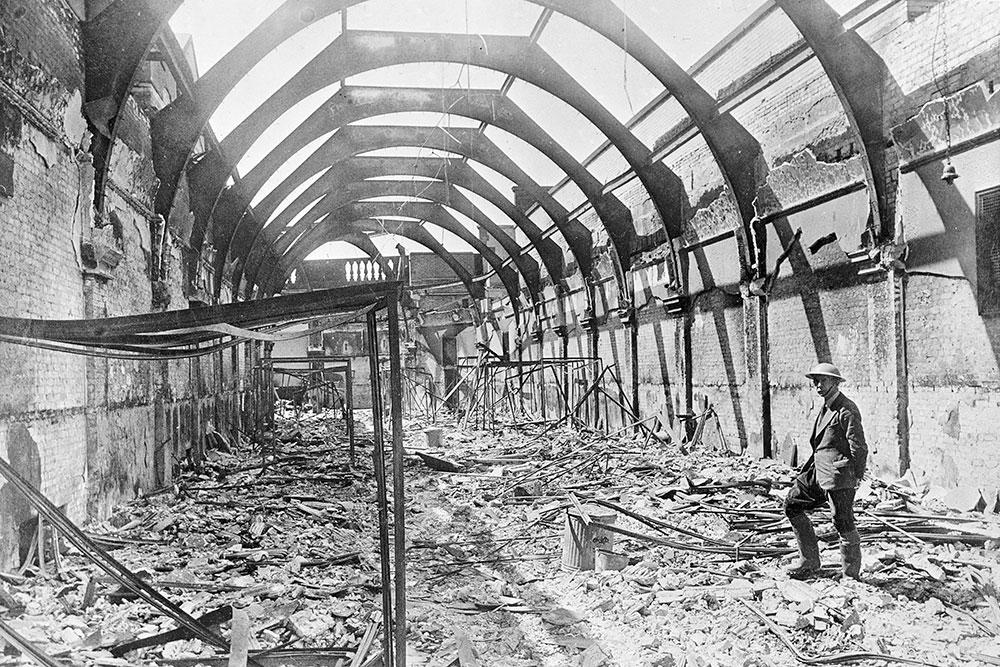
Bombed out! World Museum and the Blitz
During the Blitz of 3 May 1941 World Museum nearly died. This online exhibition highlights what happened that night. Through eye-witness accounts, photographs and objects that bear the scars of war we will see who fell victim to the bombing, who survived and who had a narrow escape.
Liverpool, an important port city was a prime target for the German bombing raids known as The Blitz. 870 tonnes of high explosive bombs and over 112,000 incendiaries fell on Liverpool that night. The next morning Liverpool looked like a wasteland. Nothing was safe, not even World Museum.
On the 4 May, 11 year old William McGuire and his father came to Liverpool to see the ruins of the city. Many years later he could still remember what he saw that day.
“…we walked down to the museum in time to see the smoke billowing out from the museum which had been hit the previous night and it was absolutely frightening to look round it …, it was horrendous, rubble everywhere…”
During the night a massive high explosive bomb landed on the roof of the Central Library. The blast buried library staff under the wreckage and a fire began to take hold of the building. It spread to World Museum.
Despite the efforts of museum staff and volunteers the flames ripped through the museum, gutting it from top to bottom. Douglas Allen, World Museum’s Director was on duty.
“The new fire thus caused the most serious losses, including much Pacific ethnographical material, the planked and ribbed scale models of fishing craft, the key pieces of the old Liverpool Pottery collection, the Anglo Saxon bronze bowls and some Egyptian antiquities… the Palaeontology Gallery on top were soon completely gutted”
No humans died in the museum that night, but there were thousands of victims. Sammy the seal died in his aquarium tank, fish were swilled down drains and items from across the museum’s vast collections were turned to ashes.
This is the story of what happened that night and how the museum began its recovery.
